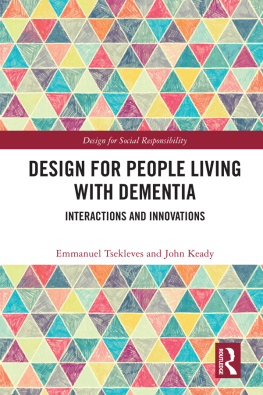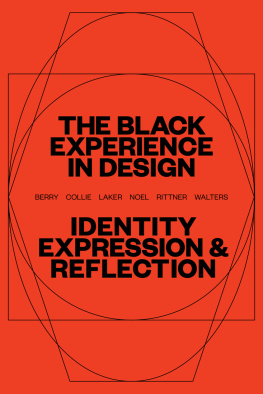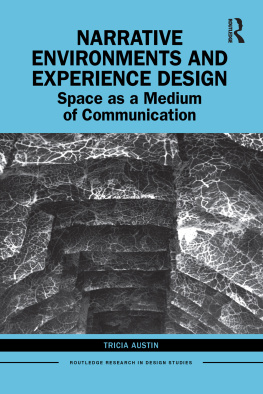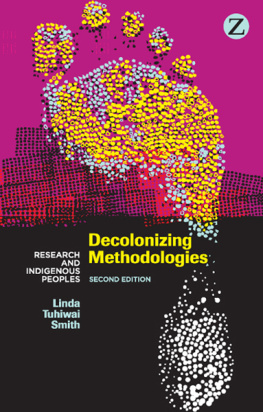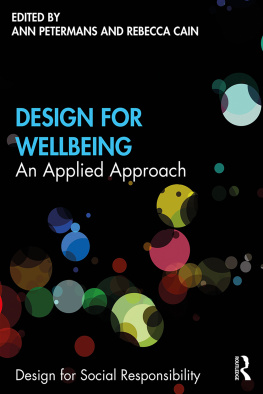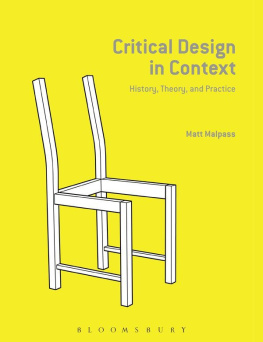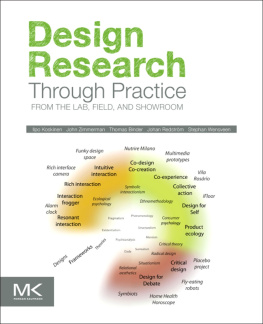2023 Elizabeth Tunstall
All rights reserved. No part of this book may be reproduced in any form by any electronic or mechanical means (including photocopying, recording, or information storage and retrieval) without permission in writing from the publisher.
The MIT Press would like to thank the anonymous peer reviewers who provided comments on drafts of this book. The generous work of academic experts is essential for establishing the authority and quality of our publications. We acknowledge with gratitude the contributions of these otherwise uncredited readers.
This book was set in Halyard Text and Halyard Micro by Brian Johnson, Silas Munro, and Edgar Casarin of Polymode.
Library of Congress Cataloging-in-Publication Data is available.
ISBN: 978-0-262-04769-2
10 9 8 7 6 5 4 3 2 1
d_r0
Dedication
Decolonizing Design is dedicated to the ancestors, whose wisdom and resilience have co-created the conditions of possibility for me to exist with a deep sense of freedom and thus fearlessness.
Decolonizing Design is dedicated to the love warriors of today who fight oppression, discrimination, and colonization with deep love for self, family, community, the earth, skies, and all in between, and always love for da culture.
Most importantly, Decolonizing Design is dedicated to those who are yet to come. I am lovingly obligated to co-create the conditions for you to exist with a deep sense of freedom and thus fearlessness as well.
Contents
Introduction Decolonizing Design
What Might It Mean?
Chapter 1: Decolonizing Design Means
Putting Indigenous First
Chapter 2: Decolonizing Design Means
Dismantling the Tech Bias in the European Modernist Project
Chapter 3: Decolonizing Design Means
Dismantling the Racist Bias in the European Modernist Project
Chapter 4: Decolonizing Design Means
Making Amends through More than Diversity, Equity, and Inclusion
Chapter 5: Decolonizing Design Means
Reprioritizing Existing Resources to Decolonize
Introduction
DECOLONIZING DESIGN:
What Might It Mean?
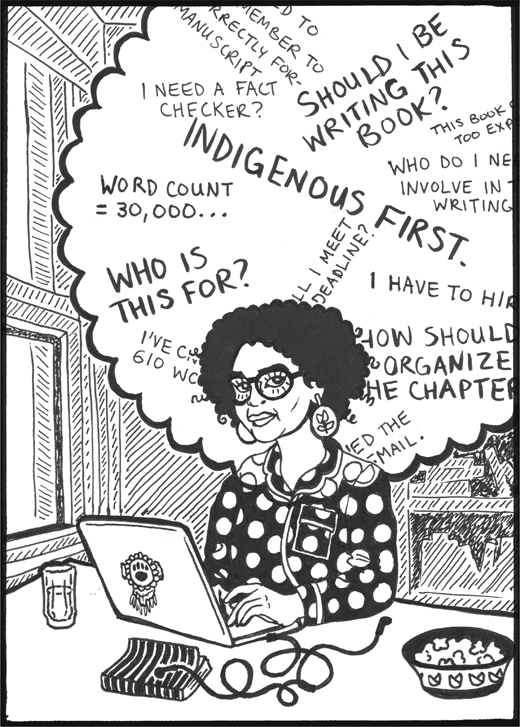
Figure 0.1 Dori feels anxieties about writing the book. Illustration by Ene Agi.
Welcome, reader, to the book Decolonizing Design. It is important, as well as polite, that I first introduce myself. This book is a guide on how you might more effectively facilitate the decolonization of design in the institutions, organizations, and design firms in which you work. It is organized by and interwoven with my lived experiences of decolonizing design in design institutions in the United States, Australia, and Canada. Thus, to help guide you on how to read this book, I must share a little bit about myself.
I am Elizabeth (Dori) Tunstall, daughter of Theresa and Joseph, daughter of Raymond and Leatha; granddaughter of Delores and Johnny, granddaughter of Bettie; great-granddaughter of Katrina and Raymond; and descendant of other ancestors known and unknown.
I was born in Columbia, South Carolina, on the lands of the Catawba, Pee Dee, Chicora, Edisto, Santee, Yamassee, and Chicora-Waccamaw nations. I grew up in Indianapolis, Indiana, on the lands of the Kiikaapoi (Kickapoo), Kaskaskia, and Myaamia (Miami) nations.
I am African American and gendered female by birth and social expression (that is, cisgender female). There are other identities that I have, but these two almost overdetermine who I am culturally and how the world interacts with me. I will talk about this more, but my family has lived as African Americans in the United States for at least seven generations that we can document. Culturally, it means that my first language is English; my family's religion is Christian; part of my ancestry was brought here as enslaved Africans, other parts were European, particularly English, and also some were Indigenous. It means I have known what discrimination and racism feel like from my earliest ages and have dedicated myself to help end them for the next generation. My gender means I am capable of great things, live with a little fear of men, experience monthly menstrual cramps, and have placed upon me heavy expectations on how I should look, behave, and think, which I work daily to defy.
I am a traveler. I have lived in the United States cities of Indianapolis, Philadelphia, Los Angeles, Riverside, East Palo Alto, and Chicago. I have lived in the global cities of Addis Ababa, Melbourne, and my home at the time of this writing, Toronto. I will share my experiences of some of these places with you.
I am a scholar and a creative. I love reading, writing, drawing, and knowledge. My favorite place is inside the ideas in my own head. I have a bachelor of arts degree in anthropology from Bryn Mawr College, an all-women's and nonbinary college outside of Philadelphia, and a master's and PhD in anthropology from Stanford University in Palo Alto. This means that sometimes I will pull you deeply into a theory and framework that have been helpful to me and I hope will be helpful to you. My mind is very creative. I tend to make strange connections between ideas; this you will also find in my writing.
I have worked both in academia and industry. I will talk about my work in high-tech consulting with E-Lab/Sapient and Arc Worldwide, but also my teaching at places such as the University of Illinois at Chicago, Swinburne University of Technology in Melbourne, and Ontario College of Art and Design University (OCAD U), where, as of this writing, I am the Dean of the Faculty of Design and the first Black and first Black female dean of design anywhere.
I am passionate about truth and justice. Growing up African American, I am deeply aware of the injustices done to my peoples as well as Indigenous and other peoples. I take injustice personally and counter it as much as possible with truth, and action based on truth. This book comes out of my commitment to truth and justice.
These are some places to start in your journey of learning about me and my lived experiences. You might want to return to them if you get lost in the stories that I will tell. The limitations of my lived experiences and the places I have lived also frame the limitations of the book. This is a book specifically about decolonizing design in the contexts of Canada, the United States, and Australia. There are others whose lived experiences will have better equipped them to talk about decolonizing design in the contexts of Europe, Asia, Africa, Oceania, the Middle East, and Latin America. For starters, I would suggest engaging with co-founding members of the global Decolonising Design Collective for their various perspectives: Dr. Danah Abdulla (the Arab region), Dr. Ahmed Ansari (the Indian subcontinent), Dr. Ece Canli (Turkey and Europe), Dr. Mahmoud Keshavarz (immigrants in Europe), Dr. Matthew Kiem (Australia), Dr. Pedro Oliveira (Brazil), Dr. Luiza Prado de O Martins (Brazil), and Dr. Tristan Schultz (Aboriginal Australia). I would also suggest Dr. Arturo Escobar's Designs for the Pluriverse (2018) for a deep perspective on decolonizing design from a Spanish-speaking Latin American perspective.
My aspiration is that Decolonizing Design will show you the current and future possibilities of design. It approaches design from a much broader perspective than the making of objects, graphics, environments, and interactions, because decolonizing design requires that we break down our basic assumptions of what design is and what it has been, and then rebuild anew with a more inclusive understanding of its theories and practices. The book is my answer to the question that many design firms, institutions, and community organizations have asked me over the years, What might decolonizing design mean to my firm/institution/organization? This question has gained more urgency as we all grappled with the racial inequities brought to the fore in 2020 by the COVID-19 pandemic, the focus on Indigenous land and water rights, and the recorded murder of an African-American man, George Floyd, by white Minnesota police officer Derek Chauvin. The social reckoning as a result of these events has opened possibilities for design to address its past harms and make amends for the theft of Indigenous lands and the exploitation of Indigenous, Black, Asian, and Latinx labor which defines colonization, by co-creating the conditions for respect, harmony, and Indigenous sovereignty.


